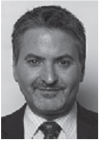The Only Two Numbers You Need To Know For Successful Planning
 I had an interesting conversation with my neighbour a couple of weeks ago about how complicated investing can be. He had done some research and spoken to a broker about investing an inheritance he had just received. He shared with me some comments and terms that were used at the meeting. Betas, Alphas, nominal GDP, standard deviation, variance… This would be fine if my neighbour was a rocket scientist. But he’s not. He is a typical Canadian with little knowledge about investing. This is the first significant chunk of money that he has come across so he has never had an opportunity to invest any kind of money. He was confused and discouraged. He just wanted to have someone explain what he should be doing with this newfound money in a safe, conservative way.
I had an interesting conversation with my neighbour a couple of weeks ago about how complicated investing can be. He had done some research and spoken to a broker about investing an inheritance he had just received. He shared with me some comments and terms that were used at the meeting. Betas, Alphas, nominal GDP, standard deviation, variance… This would be fine if my neighbour was a rocket scientist. But he’s not. He is a typical Canadian with little knowledge about investing. This is the first significant chunk of money that he has come across so he has never had an opportunity to invest any kind of money. He was confused and discouraged. He just wanted to have someone explain what he should be doing with this newfound money in a safe, conservative way.
Investment professionals tend to use language that is complicated and most of the times, unnecessary. They feel using fancy jargon makes them sound knowledgeable and educated, like they know what they are talking about.
I don't believe in complicating things. As a matter of fact, if you want to be extremely successful with your investments all you need to know is 2 numbers:
- The rate of return (%) you need to earn, on average, per year to meet your goals (assuming you have some) and
- How much money you need to save per year.
That's it. I promise!
There are many questions that need to be answered before you can conclude what % you need to earn and how much you need to save each year such as:
- What are your goals for your money?
- When will you need it?
- What are ALL the sources of your future income (pensions, rrsps, inheritances...)?
- How will future inflation affect you?
- How much money will you need per year when you retire?
- How do you feel about the ups and downs of the markets?
It's not rocket science. A good financial planner can you walk you through the questions that need to be answered, in plain English. Once they go through these questions with you, they should be able to find out what rate of return you need to earn per year on your current savings, and the amount of savings you will need to make every year to fund your goal. Once this is figured out, a planner should suggest a portfolio of investments that has, in the past, given that rate of return with the least amount of risk. The next step would to put the plan into action by investing the money for you.
The final and most important step for successful investing is the step that many advisors and investors miss. Your portfolio needs to be reviewed and rebalanced at least twice a year. This is necessary because your goals and needs may have changed. The markets may have also made moves that may make your portfolio more risky than it needs to be.
It’s not hard at all to have a well thought-out plan to make sure your money is working in a matter that’s best suited for you. The first step should be to make sure your financial planner speaks your language!
John Kalos , CFP,Fin.Pl. is an independent Certified Financial Planner and founder of Ironshield Financial Planning. He is also the founder of “Confessions of an Ex-Banker” Podcast.


